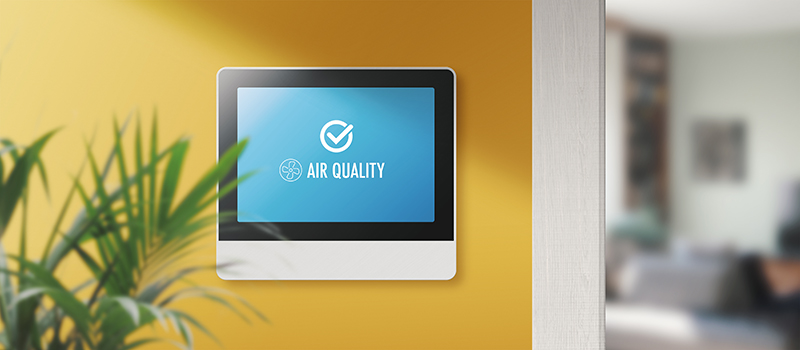
Smart buildings offer a range of benefits, including:
- Improved Energy Efficiency: Smart building technologies can help to optimize energy usage by monitoring and controlling heating, cooling, lighting, and other systems in real-time, leading to reduced energy consumption and lower energy costs.
- Increased Comfort and Productivity: Smart buildings can provide a more comfortable and productive environment for occupants by adjusting the temperature, lighting, and air quality based on occupancy and usage patterns.
- Enhanced Safety and Security: Smart building technologies can help to enhance safety and security by monitoring and controlling access to the building and providing real-time alerts in case of emergency situations.
- Better Asset Management: Smart building technologies can provide valuable insights into building usage patterns, which can be used to improve the maintenance and management of building assets, such as elevators, HVAC systems, and other critical infrastructure.
- Increased Building Value: Smart buildings are highly sought after by tenants, landlords, and buyers, and can result in higher rents, higher occupancy rates, and increased building value over time.

Common Types of Sensors
The sensors used in smart building technology can vary widely depending on the specific needs and requirements of the building. However, some common types of sensors used in smart facility management include:
IoT Sensors for Smart Facility Management
In smart facility management, a variety of IoT sensors are used to monitor and manage different aspects of the facility. Some common IoT sensors used in smart facility management include:
- Occupancy Sensors: Occupancy sensors detect the presence of individuals in rooms or areas of a facility. They are used to manage lighting, HVAC systems, and energy consumption based on occupancy levels.
- Temperature and Humidity Sensors: These sensors monitor temperature and humidity levels throughout the facility. They help maintain optimal indoor climate conditions and can trigger automated adjustments to HVAC systems.
- Light Sensors: Light sensors measure the ambient light levels in different areas of the facility. They are used to control lighting systems, ensuring optimal lighting conditions while minimizing energy waste.
- Motion Sensors: Motion sensors detect movement within specific areas of the facility. They are used for security purposes, occupancy detection, and to trigger automated responses such as turning on lights or adjusting temperature settings.
- Air Quality Sensors: Air quality sensors monitor parameters such as CO2 levels, volatile organic compounds (VOCs), and particulate matter. They help maintain healthy indoor air quality, ensure compliance with ventilation standards, and support occupant well-being.
- Water Usage Sensors: Water usage sensors track water consumption and detect leaks or abnormal usage patterns. They help optimize water management, conserve resources, and prevent water damage.
- Energy Consumption Sensors: These sensors monitor energy consumption in different areas of the facility, providing insights into usage patterns and identifying opportunities for energy efficiency improvements.
- Security Sensors: Security sensors include intrusion detection sensors, door/window sensors, and surveillance cameras. They enhance facility security by detecting unauthorized access and providing real-time monitoring and alerts.
- Asset Tracking Sensors: Asset tracking sensors are used to monitor the location and movement of equipment, tools, and inventory within the facility. They help optimize asset utilization, prevent loss or theft, and streamline inventory management.
- Environmental Sensors: Environmental sensors monitor parameters such as noise levels, air pressure, and radiation. They help ensure compliance with safety standards and regulations and provide data for environmental analysis.
These IoT sensors, along with a centralized management system and data analytics, enable facility managers to monitor, control, and optimize various aspects of the facility in real-time. The data collected from these sensors can be analyzed to identify patterns, improve operational efficiency, enhance occupant comfort, and reduce costs.
- Temperature sensors: Used to measure the temperature in various parts of the building and adjust the heating and cooling systems accordingly.
- Lighting sensors: Used to detect the presence of occupants in a room and adjust the lighting levels based on occupancy.
- Occupancy sensors: Used to detect the presence of people in a room and adjust the lighting, temperature, and ventilation systems accordingly.
- Energy usage sensors: Used to monitor the energy consumption of various building systems, such as heating, cooling, lighting, and appliances.
- Air quality sensors: Used to measure the quality of the indoor air and adjust the ventilation system accordingly.
- Motion sensors: Used to detect movement in the building and trigger alarms or other security measures.
- Sound sensors: Used to detect and monitor noise levels in the building, which can be used to adjust the acoustics or improve the overall sound environment.
- Humidity sensors: Used to measure the humidity levels in the building and adjust the heating and cooling systems accordingly.
- Water sensors: Used to detect water leaks and prevent damage to the building.
These are just a few examples of the types of sensors that can be used in smart buildings. The specific sensors used in each building will depend on the building’s size, usage patterns, and desired outcomes.
Qonda System enables the smartification of our customers’ building using sensors and IoT systems from Monnit, Netvox, Contec, Milesight, SensGuard, Senso8 and others.